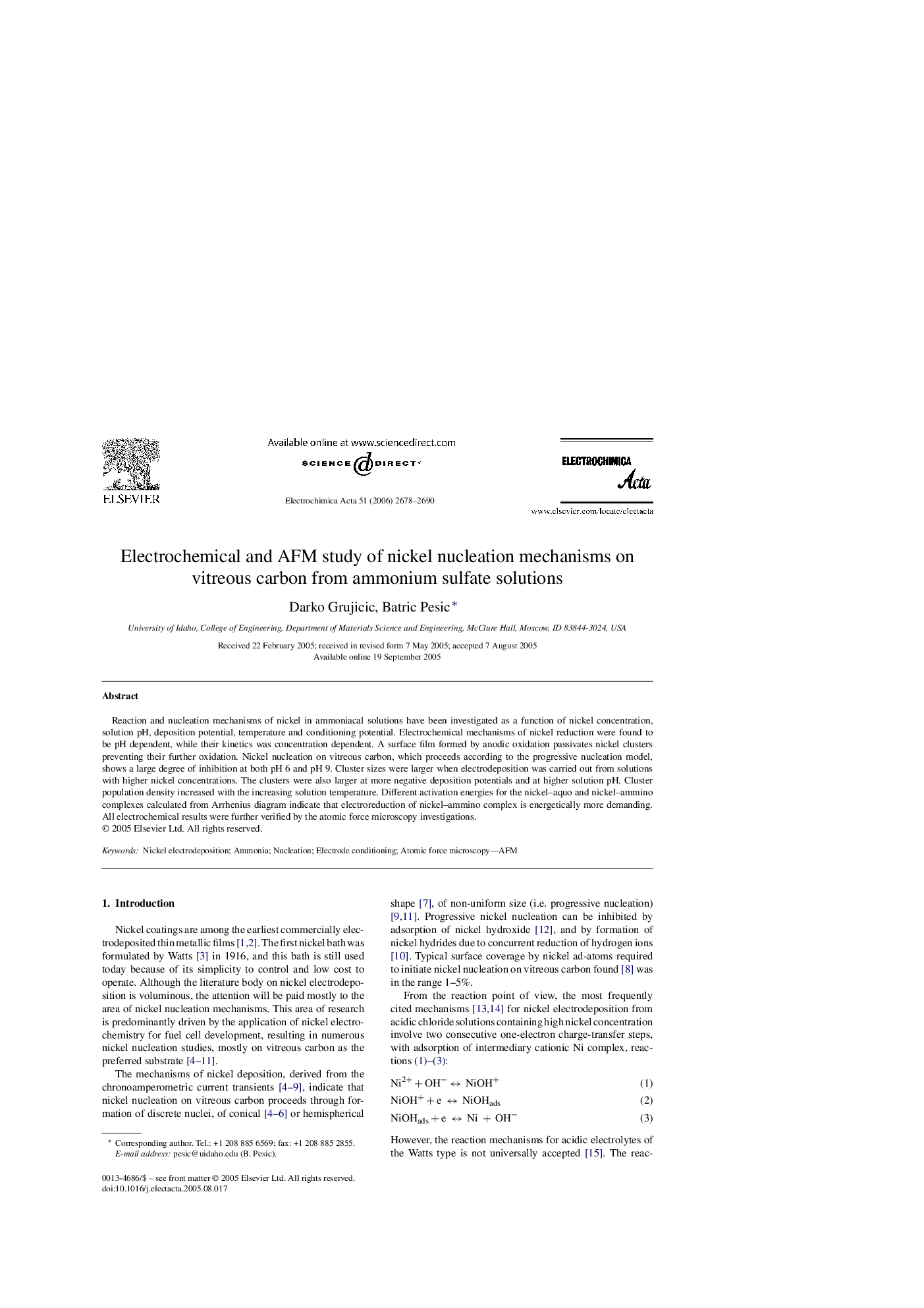| Article ID | Journal | Published Year | Pages | File Type |
|---|---|---|---|---|
| 196773 | Electrochimica Acta | 2006 | 13 Pages |
Reaction and nucleation mechanisms of nickel in ammoniacal solutions have been investigated as a function of nickel concentration, solution pH, deposition potential, temperature and conditioning potential. Electrochemical mechanisms of nickel reduction were found to be pH dependent, while their kinetics was concentration dependent. A surface film formed by anodic oxidation passivates nickel clusters preventing their further oxidation. Nickel nucleation on vitreous carbon, which proceeds according to the progressive nucleation model, shows a large degree of inhibition at both pH 6 and pH 9. Cluster sizes were larger when electrodeposition was carried out from solutions with higher nickel concentrations. The clusters were also larger at more negative deposition potentials and at higher solution pH. Cluster population density increased with the increasing solution temperature. Different activation energies for the nickel–aquo and nickel–ammino complexes calculated from Arrhenius diagram indicate that electroreduction of nickel–ammino complex is energetically more demanding. All electrochemical results were further verified by the atomic force microscopy investigations.
